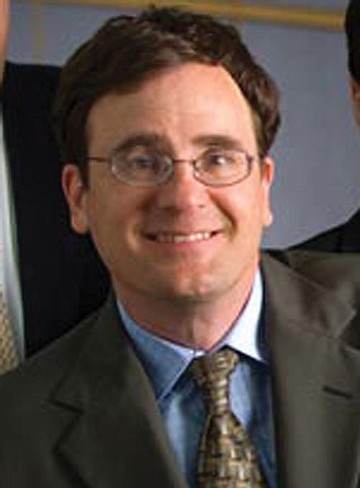 Facebook
Facebook
 X
X
 Instagram
Instagram
 TikTok
TikTok
 Youtube
Youtube

Hell hath no fury like a bureaucrat fearful of losing a cushy job or a real estate kingpin fearful of losing a fat government subsidy. Therefore, the move to bring back redevelopment in some form has turned decidedly dirty. San Diego, that bastion of corporate welfare (euphemistically called public-private partnerships), is in the forefront.
Redevelopment should be dead of its own abuses. After World War II, it was set up to rehabilitate truly blighted neighborhoods. Over time, business hijacked the concept, and redevelopment funds were used to subsidize hotels, shopping centers, auto dealers, movie theaters, pro sports facilities, ad nauseam, and the definition of blight became meaningless. Last year, Governor Jerry Brown took advantage of public revulsion of these abuses to get the legislature to vote to close redevelopment agencies so money could go back to the schools, from which it had been stolen. The California Supreme Court affirmed the death knell.

More than 400 California redevelopment agencies began shutting down February 1. But they had had more than a year to plot evasion maneuvers, and “jurisdiction after jurisdiction throughout the state [had] tried to figure out how to fast-track” projects to scoot under the wire, says Erik Bruvold, president of National University System Institute for Policy Research.
Now, successor agencies have long lists of so-called “enforceable obligation payment schedules,” or projects that, they assert, must legally go forward, even with the redevelopment agencies shuttered. San Diego has a stunning $6.5 billion worth of these projects on its list, and half are downtown, which for decades has pigged out while the rest of the city and its infrastructure starved.
“Cities are trying to create bogus redevelopment debt,” says Dr. Brian Peterson, a veterinarian who heads the Grantville Action Group, which fights redevelopment abuses.

Those phony lists will have to be culled by the Department of Finance. It doesn’t have the horses, or the time, to go over hundreds of dubious claims. “It’s not clear to me how much staff the Department of Finance has to verify these lists,” says former councilmember Donna Frye, warning that cities padding those lists might suffer some unforeseen consequences.
The Department of Finance may throw up its hands temporarily: “I think that rejecting all the [enforceable obligation payment schedules] is something they are thinking about. They can throw [the lists] back to the successor agencies and tell them to come up with new [lists] that are appropriate,” says Peterson.
Now, lobbyists with cash-filled suitcases are escalating efforts in Sacramento. Darrell Steinberg, president pro tem of the state senate, has introduced two bills that would permit cities to form new entities that could tap billions of dollars in assets of the former redevelopment agencies. However, even Steinberg admits that the bills will have less chance if state financial woes persist.
These bills face two stumbling blocks. First, if state finances remain in the muck, there will be pressure to put scarce resources elsewhere. Second, there is Governor Brown. “What I am hearing is that Brown is not going to sign off on anything related to redevelopment,” says Peterson. “If legislators want to bring back redevelopment, he will veto it.” Those in the pro-redevelopment camp are convinced that Brown might cave. One persuasive argument that he won’t: Brown got his bill through the legislature and had it ratified by the highest court. Why should he cede the ground he gained?

There is one thing that people seem to agree on: the financial prestidigitation called “tax increment financing” has had its day. “Tax increment financing is done,” says Vlad Kogan, Ph.D. candidate in political science at the University of California San Diego.
This is financing on the come. Governments expect future tax revenue to subsidize current redevelopment. The theory is that a project will raise real estate values in the neighborhood and thereby boost property tax receipts. But through the years, governments have found that projects in truly run-down areas don’t necessarily bring that tax revenue.
So developers have zeroed in on nonblighted areas and called them blighted. Abuse of eminent domain has become widespread. Tax increment financing has come to mean taxpayer subsidization of projects that should have been financed with private capital.
That kind of financing is dead because “the state needs every nickel it can get,” says Bruvold. The education lobby and other power groups that have Brown’s ear will push hard to get the money that once went to corporate welfare.
The pro-development forces are saying that redevelopment can come back in some modified form for such do-good purposes as affordable housing. But that’s just a stalking horse. Frye, for instance, would like to see money go to public projects such as affordable housing, but she is realistic. “I would like to believe that private projects would be less likely to be approved,” she says, “but I can’t say that, given the politics and cronyism” in state and local government.
Bruvold, too, says projects for the public good have little clout. “There will be public-private resources that flow to [private sector] developments,” says Bruvold. Those subsidized private deals, such as for a pro sports stadium and hotels “have a big megaphone with local media,” he notes. He even believes that a new Chargers stadium will be built. “The likely scenario is selling Qualcomm Stadium and the sports arena and using the proceeds to build a new stadium. Killing redevelopment will make it harder, but the end of redevelopment and tax increment financing does not stop the City from trying.”

No doubt. Mayor Jerry Sanders wants Centre City Development Corporation, which has spearheaded the downtown money hogging, to be in charge of planning throughout the city. Hmm. Seventeen oversight boards in the county will supervise the transition to successor agencies. “But will they be undersight boards?” asks Steve Erie, professor of political science at the University of California San Diego.
All things considered, however, the overall picture is promising, says Peterson. “Redevelopment as we have known it is dead,” he declares.


Hell hath no fury like a bureaucrat fearful of losing a cushy job or a real estate kingpin fearful of losing a fat government subsidy. Therefore, the move to bring back redevelopment in some form has turned decidedly dirty. San Diego, that bastion of corporate welfare (euphemistically called public-private partnerships), is in the forefront.
Redevelopment should be dead of its own abuses. After World War II, it was set up to rehabilitate truly blighted neighborhoods. Over time, business hijacked the concept, and redevelopment funds were used to subsidize hotels, shopping centers, auto dealers, movie theaters, pro sports facilities, ad nauseam, and the definition of blight became meaningless. Last year, Governor Jerry Brown took advantage of public revulsion of these abuses to get the legislature to vote to close redevelopment agencies so money could go back to the schools, from which it had been stolen. The California Supreme Court affirmed the death knell.

More than 400 California redevelopment agencies began shutting down February 1. But they had had more than a year to plot evasion maneuvers, and “jurisdiction after jurisdiction throughout the state [had] tried to figure out how to fast-track” projects to scoot under the wire, says Erik Bruvold, president of National University System Institute for Policy Research.
Now, successor agencies have long lists of so-called “enforceable obligation payment schedules,” or projects that, they assert, must legally go forward, even with the redevelopment agencies shuttered. San Diego has a stunning $6.5 billion worth of these projects on its list, and half are downtown, which for decades has pigged out while the rest of the city and its infrastructure starved.
“Cities are trying to create bogus redevelopment debt,” says Dr. Brian Peterson, a veterinarian who heads the Grantville Action Group, which fights redevelopment abuses.

Those phony lists will have to be culled by the Department of Finance. It doesn’t have the horses, or the time, to go over hundreds of dubious claims. “It’s not clear to me how much staff the Department of Finance has to verify these lists,” says former councilmember Donna Frye, warning that cities padding those lists might suffer some unforeseen consequences.
The Department of Finance may throw up its hands temporarily: “I think that rejecting all the [enforceable obligation payment schedules] is something they are thinking about. They can throw [the lists] back to the successor agencies and tell them to come up with new [lists] that are appropriate,” says Peterson.
Now, lobbyists with cash-filled suitcases are escalating efforts in Sacramento. Darrell Steinberg, president pro tem of the state senate, has introduced two bills that would permit cities to form new entities that could tap billions of dollars in assets of the former redevelopment agencies. However, even Steinberg admits that the bills will have less chance if state financial woes persist.
These bills face two stumbling blocks. First, if state finances remain in the muck, there will be pressure to put scarce resources elsewhere. Second, there is Governor Brown. “What I am hearing is that Brown is not going to sign off on anything related to redevelopment,” says Peterson. “If legislators want to bring back redevelopment, he will veto it.” Those in the pro-redevelopment camp are convinced that Brown might cave. One persuasive argument that he won’t: Brown got his bill through the legislature and had it ratified by the highest court. Why should he cede the ground he gained?

There is one thing that people seem to agree on: the financial prestidigitation called “tax increment financing” has had its day. “Tax increment financing is done,” says Vlad Kogan, Ph.D. candidate in political science at the University of California San Diego.
This is financing on the come. Governments expect future tax revenue to subsidize current redevelopment. The theory is that a project will raise real estate values in the neighborhood and thereby boost property tax receipts. But through the years, governments have found that projects in truly run-down areas don’t necessarily bring that tax revenue.
So developers have zeroed in on nonblighted areas and called them blighted. Abuse of eminent domain has become widespread. Tax increment financing has come to mean taxpayer subsidization of projects that should have been financed with private capital.
That kind of financing is dead because “the state needs every nickel it can get,” says Bruvold. The education lobby and other power groups that have Brown’s ear will push hard to get the money that once went to corporate welfare.
The pro-development forces are saying that redevelopment can come back in some modified form for such do-good purposes as affordable housing. But that’s just a stalking horse. Frye, for instance, would like to see money go to public projects such as affordable housing, but she is realistic. “I would like to believe that private projects would be less likely to be approved,” she says, “but I can’t say that, given the politics and cronyism” in state and local government.
Bruvold, too, says projects for the public good have little clout. “There will be public-private resources that flow to [private sector] developments,” says Bruvold. Those subsidized private deals, such as for a pro sports stadium and hotels “have a big megaphone with local media,” he notes. He even believes that a new Chargers stadium will be built. “The likely scenario is selling Qualcomm Stadium and the sports arena and using the proceeds to build a new stadium. Killing redevelopment will make it harder, but the end of redevelopment and tax increment financing does not stop the City from trying.”

No doubt. Mayor Jerry Sanders wants Centre City Development Corporation, which has spearheaded the downtown money hogging, to be in charge of planning throughout the city. Hmm. Seventeen oversight boards in the county will supervise the transition to successor agencies. “But will they be undersight boards?” asks Steve Erie, professor of political science at the University of California San Diego.
All things considered, however, the overall picture is promising, says Peterson. “Redevelopment as we have known it is dead,” he declares.
Comments